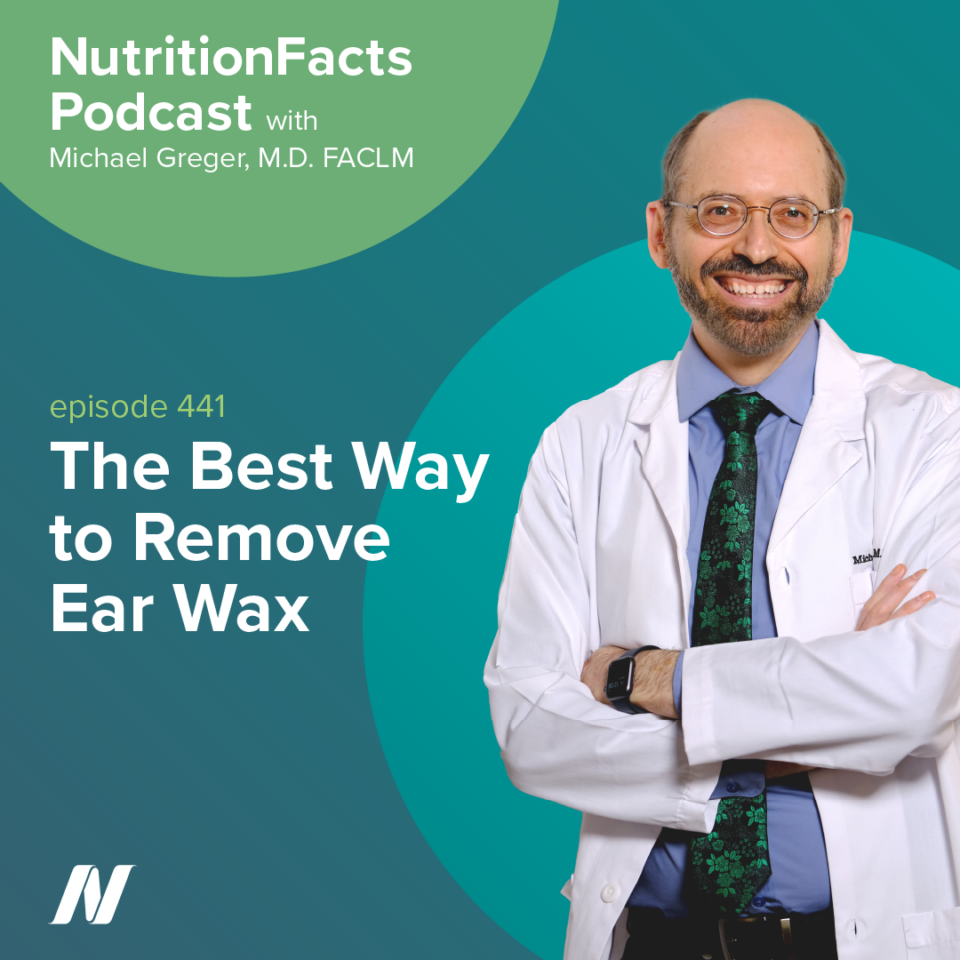Ear candles (also known as ear cones) are promoted as a low cost, effective treatment for earwax. They are hollow tubes of fabric impregnated with paraffin or beeswax. One end is placed in the entrance to the ear canal, and the other end is lit. After 15 minutes or so, the flame is extinguished, and a brownish waxy substance can be seen within the remaining stub. This is claimed to be ear wax drawn out by some sort of vacuum “chimney effect.” But, the same residue (presumably from the burning wax smoke) appears if you burn it alone outside the ear. Researchers actually took the additional step of running used ear candle stubs through a mass spectrometer, and indeed, no evidence of ear wax was found. Not surprisingly, perhaps, since tympanometric measurements showed no signs of negative “chimney effect” pressure at any point.
Not to be dissuaded, proponents suggest that while no ear wax may be drawn out that day, the candling process at least heats up and melts the ear wax, which then comes out naturally over the next few days. But, Health Canada measured the air temperature at the ear end of the burning candle, and the highest temperature reached was only 72º F, well below body temperature. Though the purported theories were found to be “implausible and demonstrably wrong,” the only way to really tell if it works is to examine the wax buildup in people before and after ear candling.
Photographs inside the ear canal were taken before and after ear candling. Not only was no wax removed, but in some of the ear canals candle wax was deposited. So, they ended up worse than they were before––not to mention the recorded complications, including ear burns, complete candle wax blockage of ear canals, ear drum perforation, infection, and setting the person’s hair on fire. Researchers concluded, “Ear candles have no benefit in the management of earwax and may result in serious injury.” Ear candles appear to be a triumph of ignorance over science.
So, what is effective for getting rid of earwax? I’ll cover that, next…
One of the most common reversible causes of hearing loss is earwax buildup. Earwax is normal, and if it isn’t causing symptoms, should be left alone. It doesn’t start interfering with hearing acuity until it clogs off at least 80 percent of the ear canal. Ironically, hearing aids are a risk factor for excessive ear wax, as are anything else you put in your ear, like ear plugs, since that stimulates the earwax glands. For further irony, so may cotton-tipped swabs that as many as two-thirds of people use to clean their ears. You may think you’re making things better by swabbing out your ears, but you may actually be making them worse. Simply removing protective wax can leave your ear canals dry, itchy, and achy or even lead to “Q-tip otalgia,” a term coined to refer to an ear pain syndrome caused by cotton-tipped swabs. You shouldn’t need to clean your ear canals at all, because the wax should make its way out on its own.
That’s right. Ears are self-cleaning. The lining of your ear canal grows outward from your ear drum; so, secreted earwax and any dirt that’s trapped is eventually conveyor belted out of the ear. However, this self-cleaning mechanism can fail in 1 in 20 younger adults, and in as many as 1 in 3 older adults, and lead to excessive or impacted earwax accumulation, though they may not even know it. Seventy percent of those surveyed who had both ears completely blocked with wax thought their hearing was good. But when their ears were cleared, they were suddenly able to hear better. Clearing out impacted wax can also improve symptoms of ear irritation, pressure, and fullness. So, what’s the best way to do it?
Q-tips are a no-no. Pushing anything into the ear canal can end up making things worse by impacting wax even deeper into the ear or traumatizing the canal, resulting in abrasions, infections, or even, rarely, eardrum perforation. There’s even a case report of a cotton swab causing a brain abscess and fatal meningitis, though the presence of wood splinters suggests the tip had broken off inside the ear. Cotton swab packaging already cautions users against ear canal insertion, but perhaps warning labels should be made even clearer, wrote one clinical medical officer: “do not go near the ear hole or avoid the ear altogether.”
What about those ear drops sold for wax removal? There are about a dozen different marketed formulations on the market, none of which appears to work any better than any other, or even compared to saline (which is just salt water) or plain tap water. But five days of treatment does clear ear wax in about one in five cases compared to only one in 20 that clear up on their own within that time. In the very least, those ear drops may be able to soften wax before bulb syringe irrigation.
Irrigation (also called ear syringing) involves flushing out the wax with a low-pressure jet of warm (body temperature) water. It works up to 70 to 90 percent of the time, and if it doesn’t, clinicians have fancy devices to manually remove the wax under direct observation. The irrigation can be tried at home, though. People randomized to use a bulb at home had about a 50 percent success rate in clearing their obstruction, and armed with this knowledge, were significantly less likely to subsequently require in-office irrigation. Significant complications only happen in approximately one in 1,000 irrigations.
You should not use an oral water jet. There are papers with names like “Catastrophic Otologic Injury from Oral Jet Irrigation of the External Auditory Canal.” Even at one-third power, Waterpiks were shown to be able to perforate the ear drums of fresh cadavers. Those who insist on violating this advice should at the very least use the lowest setting, use a tip with multiple orifices, and make sure the water stream is directed only against the walls of the ear canal and never straight back towards the ear drum. But really, just don’t do it.

 Previous Podcast
Previous Podcast Next Podcast
Next Podcast